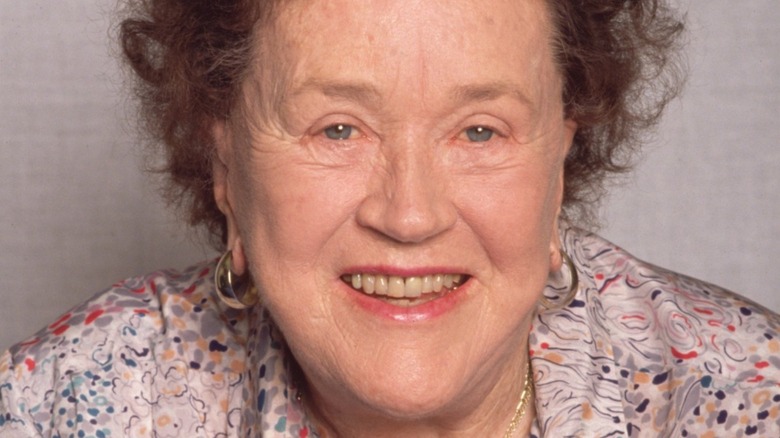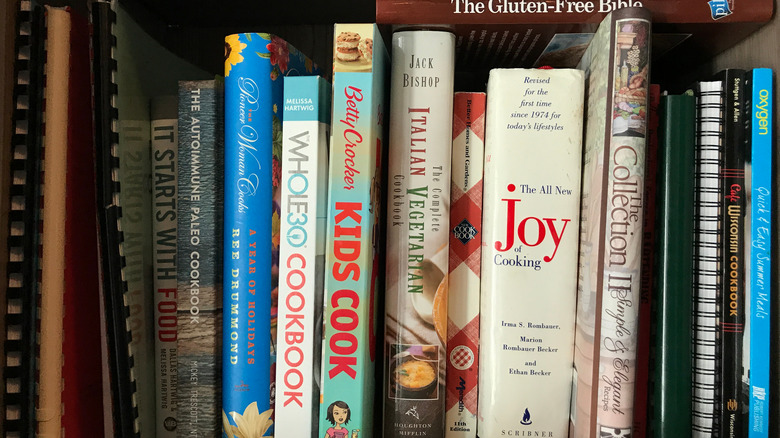How Julia Child's Method For Writing Recipes Was Revolutionary
The first known American cookbook was published in 1796, entitled "American Cookery" by Amelia Simmons. Simmons introduced the U.S. to Native American ingredients such as pumpkin and cranberries; however, the audience was limited to upper-class ladies who could read and afford the luxury of a book. Throughout the 19 century, the U.S. became more mobile, first with people emigrating to the country, then moving west to find wealth, followed by the Civil War, fanning a need for written recipes since families weren't around to answer questions.
For decades after the Civil War, wealthy white families, now without their slave cooks, had no idea how to make any of their favorite dishes. Their slaves were intentionally left illiterate and could not record their recipes, so white women began approximating how these dishes were made, starting a boom in cookbook sales. Recipes included a handful of sentences with approximate ingredients and procedures since ovens didn't have thermometers and not every household had a clock. There wasn't a standard of measurement, so instead, a recipe could say "the weight of six eggs in sugar." Or the "oven should be hot enough that your bare hand can stand comfortably for x-amount of seconds" (via The Smithsonian Magazine).
The modern recipe is credited to Fanny Farmer in the late 19 century. Farmer revolutionized how recipes were written, using standard units of measurement that were influenced by home economics reformers like Catharine Beecher, sister to Harriet Beecher Stowe, the abolitionist. Beecher argued that cooking should be more scientific and methodical, like industrial production.
What the modern cookbook did differently
Fannie Farmer's "The Boston Cooking-School Cook Book," now known as simply "Fannie Farmer's Cookbook," contained precise and replicable recipes using measuring cups. Ingredients were exact to seven-eights of a teaspoon using a level measurement, instead of a rounded one.
During the 1960s, American home cooking was about convenience, as depicted in the three-martini lunch series "Mad Men." Food encased in Jell-O and casseroles were popular, using newly available processed foods. When "Mastering the Art of French Cooking, Volume One" was finally published in 1961 (it took nine years) by Julia Child, Simone Beck, and Louisette Bertholle, cookbooks told people what to do, rather than explaining why, resulting in home cooks not being skilled enough to fix or improvise when issues arose. Child's recipes were French, using ingredients Americans could find in supermarkets. Editor, Judith Jones, explained if a recipe called for braising, Child explained this meant "drying the meat, and the kind of fat you browned it in, and not crowding the pan," instead of just saying, "braise the meat." Child stressed technique over regurgitation, making recipes detailed and easy to follow, reminiscent of the Chinese proverb, "Give a man a fish."
Accomplished chefs like Alice Waters and Thomas Keller credit Child for altering their "relationship to food." She changed the cooking landscape from dread and convenience to an art form worthy of time and intellect. Because of Child, home cooks now have unlimited options when contemplating dinner, from 20-minute meals to masterpieces that take half the day to prepare. In Child's own words, "First, you master the science, later comes the art." Bon appétit!

